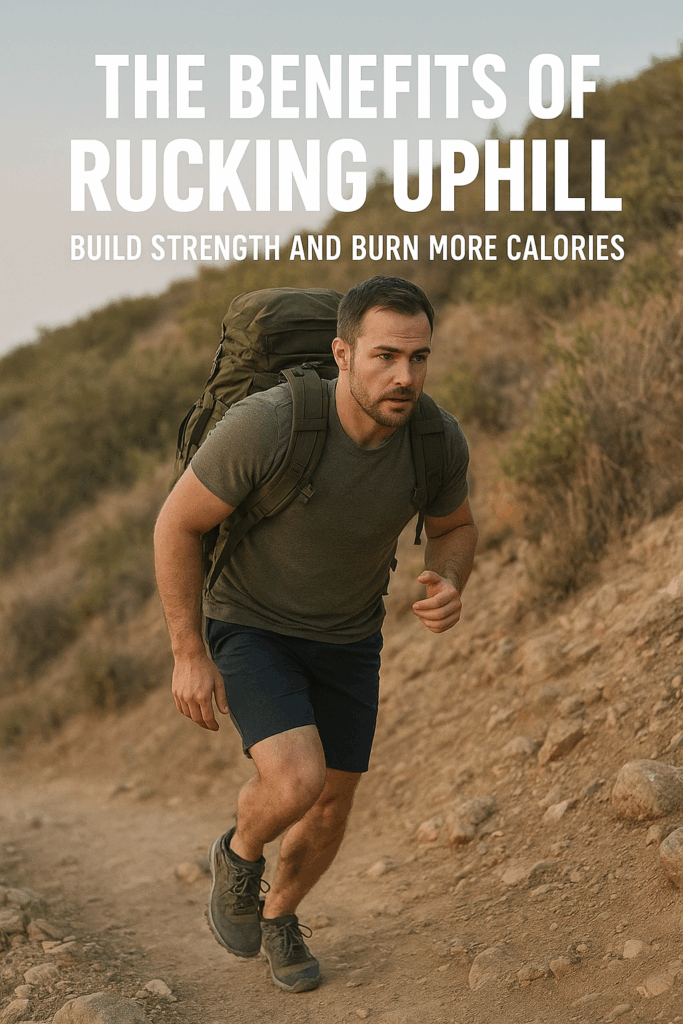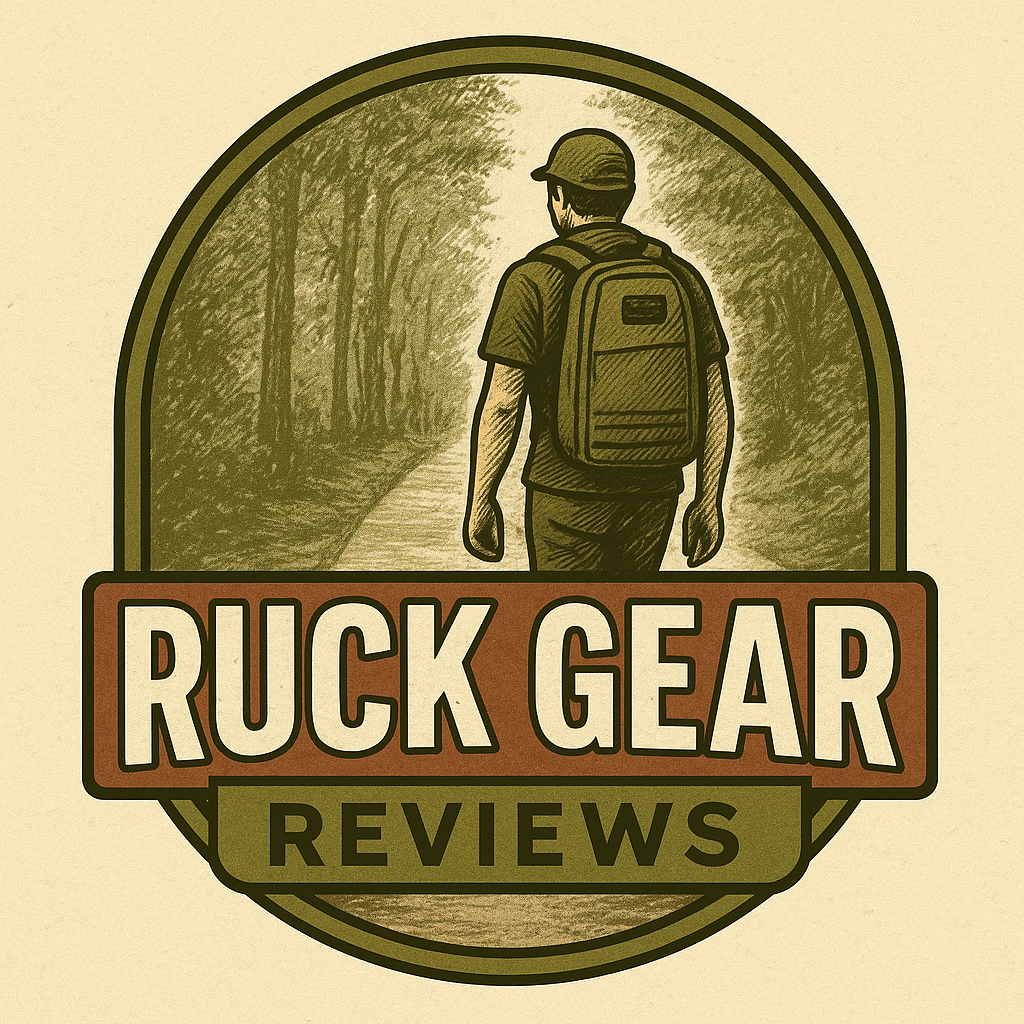The Benefits of Rucking Uphill: Why Elevation Changes Everything

Introduction
If you’ve been rucking mostly on flat roads or sidewalks, it’s time to add some elevation to your training. Rucking uphill—or adding elevation gain to your route—takes your workouts to the next level. It challenges your body, tests your endurance, and builds a kind of toughness that flat terrain simply can’t match.
Whether you’re rucking for fitness, endurance, or outdoor readiness, tackling hills introduces new physical and mental demands that accelerate progress. It mimics real-world conditions you’d face in hiking, mountain events, or military fitness tests.
In this article, we’ll break down the benefits of rucking uphill—from increased calorie burn and leg strength to improved cardiovascular health and resilience. You’ll also learn safe progression methods, proper form tips, and how to combine flat and incline rucks for maximum results.
Keywords: benefits of rucking uphill, elevation training
Physical Benefits of Uphill Rucking
Enhanced Cardiovascular Conditioning
Uphill rucking naturally elevates your heart rate more than flat terrain. The steeper the incline, the more oxygen your muscles demand. This forces your heart and lungs to work harder, improving your cardiovascular efficiency over time. Even a modest 5–10% incline can significantly boost your aerobic workload.
Regularly rucking hills enhances endurance and helps your body adapt to sustained physical stress—similar to what endurance athletes gain from elevation training. You’ll notice improved breathing control, reduced fatigue over distance, and a greater ability to maintain steady pace under load.
Increased Calorie Burn
Rucking already burns an impressive amount of calories compared to walking—roughly 400–600 calories per hour depending on body weight and pack load. Add elevation to the mix, and you can expect that number to climb to 700–900 calories per hour on moderate inclines.
That’s because your body must lift both your weight and your pack vertically with every step. This increased demand means more energy expenditure and higher post-workout calorie burn. Even short, steep hill intervals can spike your metabolism and accelerate fat loss.
Superior Leg Strength Development
One of the biggest uphill rucking benefits is the superior lower-body strength it builds. Each step uphill is a mini single-leg squat under load, engaging your:
- Quadriceps: for uphill propulsion
- Glutes: for hip extension and power generation
- Calves: for ankle stability and drive
- Hamstrings: for uphill balance and control
You’ll quickly notice stronger, more defined legs—and improved climbing performance in other activities. Uphill rucking strengthens your kinetic chain in a way flat terrain never will.
Core Stabilization Under Load
When you ruck uphill, your torso naturally leans forward slightly to counterbalance the load. This activates your core muscles—abs, obliques, and lower back—to stabilize your spine and maintain posture. Over time, this leads to better balance and reduced lower back strain.
Keywords: uphill rucking benefits, incline rucking workout
Metabolic and Weight Loss Advantages
Higher Caloric Expenditure
Rucking uphill transforms your metabolic response. The additional resistance of gravity dramatically increases calorie burn compared to flat terrain.
Here’s a simple comparison:
| Terrain | Avg. Calories Burned per Hour (180 lb rucker, 30 lb pack) |
|---|---|
| Flat pavement | 480–550 calories |
| Moderate incline (5–10%) | 650–750 calories |
| Steep incline (10–15%) | 800–900+ calories |
The steeper you go, the greater the metabolic demand—and the more efficient your workouts become in less time.
Fat-Burning Zone Efficiency
Uphill rucking keeps your heart rate in the fat-burning zone longer. Because you’re working harder at a lower speed, you maintain aerobic effort without reaching full exhaustion. This makes it ideal for sustainable weight loss.
Additionally, the continuous muscle engagement on climbs activates large muscle groups, which elevates metabolism even after your session ends.
The EPOC Effect (Afterburn)
One of the most overlooked rucking elevation training advantages is EPOC—Excess Post-Exercise Oxygen Consumption. After a demanding uphill ruck, your body continues burning calories for hours as it restores oxygen levels and repairs muscle tissue.
In other words, even after you’ve dropped your pack, your body keeps working. Over time, this contributes to leaner muscle composition and more efficient fat utilization.
Keywords: uphill rucking for weight loss, rucking elevation training
Mental and Functional Benefits
Mental Toughness Development
There’s no denying it—hill rucks are hard. They demand sustained effort, grit, and patience. But that’s exactly what makes them so valuable. Every uphill climb tests your mental toughness, discipline, and ability to push through discomfort.
Ruckers often describe this as “embracing the grind.” You’re training your mind as much as your muscles. When the terrain gets steep, so does your determination.
Practical Application for Hiking and Mountaineering
If you enjoy hiking or plan to tackle mountain trails, hill rucking prepares you better than any treadmill or gym session. It simulates real-world terrain and builds the endurance and stability needed for uneven surfaces.
By strengthening the same muscle groups used in uphill hiking, you’ll find that carrying gear or ascending long trails becomes much easier.
Goal-Setting and Achievement Mindset
Every hill offers a measurable challenge—distance, elevation gain, or time to the summit. Tracking these metrics fuels motivation and gives tangible progress markers. It’s not just fitness; it’s personal growth.
Each climb reinforces the mindset that small, consistent efforts yield long-term rewards.
Keywords: hill rucking advantages, mountain rucking benefits
Training Progressions and Techniques
Beginner Protocol
If you’re new to gradient rucking workouts, start gradually.
- Incline: 3–5% grade (gentle hill or treadmill incline)
- Weight: 10–20 lbs or about 10% of body weight
- Duration: 20–30 minutes
- Frequency: 1–2 times per week
Focus on maintaining a steady pace and upright posture. Keep steps short and deliberate, allowing your calves and glutes to adjust to the increased load.
Intermediate Variations
Once comfortable, increase the difficulty:
- Incline: 6–10% grade
- Weight: 25–35 lbs
- Duration: 40–60 minutes
- Add intervals: Alternate between 3 minutes uphill and 2 minutes flat recovery.
This introduces intensity variation that boosts cardiovascular and muscular endurance.
Advanced Hill Rucking Strategies
Experienced ruckers can push further:
- Incline: 10–15% or trail elevation gain of 500–1000+ feet
- Weight: 40–50 lbs (or event-specific load)
- Add power intervals: 1–2 minute uphill bursts followed by controlled descents.
- Tactical training: Practice under fatigue—such as stair climbs or weighted hill repeats.
The key is progression—add load or incline slowly to avoid overuse injuries.
Proper Form on Inclines
Uphill rucking demands proper biomechanics:
- Lean slightly forward from the hips, not the waist.
- Engage your core to stabilize your spine.
- Shorten your stride to maintain balance.
- Plant your foot firmly with each step for traction.
- Use trekking poles on steep or slippery surfaces for stability.
These adjustments protect your knees, ankles, and lower back—especially under heavier loads.
Keywords: gradient rucking workout, incline rucking workout
Comparing Uphill vs. Flat Terrain Rucking
Performance Metrics Comparison
Here’s a breakdown of how rucking on hills vs flat terrain affects performance:
| Factor | Flat Terrain | Uphill Terrain |
|---|---|---|
| Heart Rate | Moderate | High |
| Calorie Burn | Moderate | High–Very High |
| Leg Strength | Moderate development | High (especially glutes/quads) |
| Speed | Faster pace | Slower, more intense |
| Impact Stress | Lower | Moderate–High |
Uphill routes focus on intensity and strength, while flat routes favor endurance and pacing.
When to Choose Each Terrain Type
- Choose Flat Terrain: for recovery rucks, endurance building, or long-distance mileage goals.
- Choose Uphill Terrain: for high-intensity training, strength gains, or time-efficient calorie burn.
Alternating between both helps balance fitness development and reduce injury risk.
Combining for Optimal Results
A balanced weekly plan might include:
- 2 flat rucks for base endurance
- 1 hill ruck for strength and intensity
- 1 rest or active recovery day
This combination delivers full-spectrum conditioning—endurance, power, and resilience.
Keywords: rucking on hills vs flat terrain
Safety Considerations and Common Mistakes
Proper Weight Distribution on Inclines
Keep your pack’s heaviest items close to your upper back to maintain balance. A high center of gravity helps prevent backward tipping on steep grades. Secure all items to minimize shifting weight mid-climb.
Footwear and Stability Concerns
Choose stable, supportive footwear with solid traction—like GORUCK MACV-2 boots or GORUCK Rough Runners (if the surface is stable/smooth) or trail shoes with deep lugs. Slipping on inclines under load can quickly cause ankle injuries or knee strain.
Make sure to tighten laces for ankle stability and use moisture-wicking socks to prevent blisters on long climbs. See this article on the best sock options.
Overtraining Prevention
Incline rucking is demanding. Avoid increasing weight and elevation simultaneously. Gradually progress—either add 5–10 lbs or increase incline by 1–2% per week.
Listen to your body for warning signs of overtraining such as knee pain, shin splints, or chronic fatigue. Rest and recovery are part of the process.
Keywords: elevation training with weighted backpack
Conclusion
Rucking uphill or adding elevation to your route transforms a good workout into a great one. You’ll burn more calories, build powerful legs, strengthen your core, and enhance cardiovascular performance—all while developing mental grit and functional strength for real-world challenges.
Start small with manageable inclines and lighter loads, then progress over time. Your body will adapt, and your endurance will soar.
Ready to get started? Check out our recommended rucksacks and weighted gear to support your next hill workout—because the right equipment makes every climb more efficient and enjoyable.
